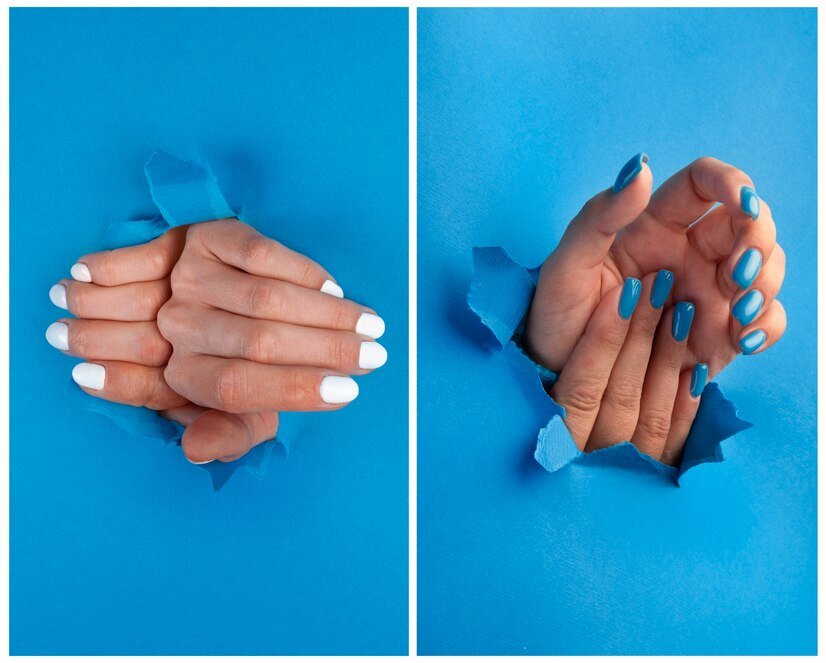Have you ever admired those beautifully manicured hands adorned with stunning acrylic nails? It’s hard not to fall in love with how they instantly enhance one’s beauty and confidence. No wonder acrylic nails have become a popular trend in recent years. But, can you get acrylics on toes?
You can get acrylic nails on your toes. Acrylic nails on toe are a trendy, fashionable and versatile choice for enhancing your foot’s appearance. However, there are some draw backs with acrylics on toes such as such as; the risk of damage to natural nails and the need for regular upkeep. By considering these factors and properly caring for your acrylic nails, you can enjoy beautiful and eye-catching toes while minimizing any potential issues.
In this blog, I’ll discuss the benefits of acrylics on toe nails, step-by-step procedure and cost of getting them done. I’ll cover it all. Let’s get to it!
Recommended Post: How Much Do Acrylic Nails Cost?
What Makes Acrylic on Your Toes a Must-Try?
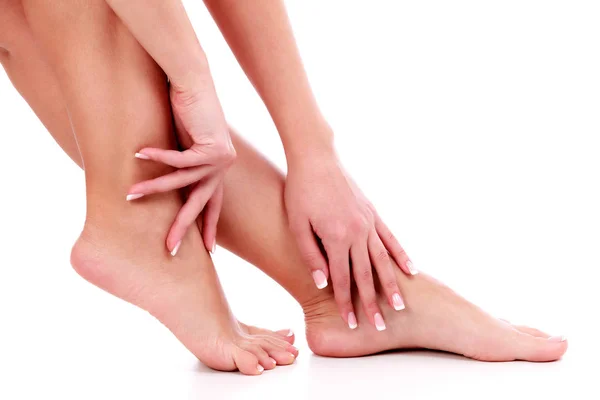

When it comes to nails, every lady desires an extraordinary touch of elegance that sets her apart. And, there’s nothing quite like acrylic nails to accomplish just that. Unlike regular nail polish, acrylics on toes provide unparalleled strength and longevity.
Your toe nails will maintain their flawless appearance for weeks on end, resisting chips and maintaining their luster even in the face of daily wear and tear. So, whether you’re heading to a beach getaway or a special event, trust you me, once you experience the allure of acrylics on your toes, there’s no turning back!
How to Apply Acrylic on Toes at Home? DIY
Applying acrylic on your toe nails at home can be a rewarding and creative experience. It is quiet easier than you might think for real, and it won’t be a hassle for you at all. However, before you even attempt a DIY acrylics on your toes, first you should ensure you have all the necessary materials to achieve the best results. Here’s a list of nail materials you will need:
- Acrylic powder: The Mia Secret Acrylic Powder 4 pc Set is a top contender, it is super easy to apply and comes in pink, natural pink, white and clear powders ( 4-in-1)
- Liquid monomer: I also recommend MIA SECRET PROFESSIONAL LIQUID MONOMER
- Top Coat(Optional)
- A nail brush
- Toe Separator: These breathable Sumiwish Foam Toe Separators are a must try. They also relieve feet pain
- Nail Glue: For value for your money, I suggest this Super Strong Nail Glue For Nail Tips
- Nail tips or forms: These are used to create the desired length and shape for your toe nails. Check out MORGLES 500pcs Acrylic Nail Tips that come with clipper, filer, cuticle pusher and fork.
- Nail primer and bonder: Primer and bonder prepare the nails and ensure a strong bond with the acrylic. My go-to is this Morovan Nail Prep Dehydrator and Nail Primer X-strength
- Nail file and buffer: Nile filer or buffer essential for shaping, smoothing, and refining the acrylic surface.
Best Recommended Product: TensCare Nailit – Laser Unit to Improve Appearence of Finger and Toe Nails. Dual Hinge for Comfort and no Pinching. quick 7 Minute Sessions
Instructions
Step 1: Prepare Your Toe Nails


Start by removing any existing nail polish and thoroughly clean your toes. You can also wash your feet to remover any dirt.
Step 2: Nail Tip Application (if desired)
If you want to add length to your toes, choose a nail tips that fit your natural nail shape( I still vouch for MORGLES 500pcs Acrylic Nail Tips) . Begin by applying a relatively small amount of nail glue to the tip and make sure it is firmly pressed onto your nail. You can also use nail clippers to trim the tips to your desired length .
Step 3: Toe Nail Priming


Now, this one is a no- brainer. Apply a thin layer of nail primer or bonder to your natural nails. This step helps the acrylic adhere better onto the toes and last longer.
Step 4: Acrylic Mixing


In a small glass container, pour acrylic liquid (monomer) and add a small amount of acrylic powder(any color of your choice). Use a nail brush to mix them together until you sort of achieve a thick but workable consistency. It should not be too thick or too light, just something you can work with.
Step 5: Acrylic Application


Next, dip your nail brush into the acrylic mixture to pick up a small bead of acrylic. Start at the base of your nail, apply the bead of acrylic to the nail surface, gently brushing it towards the tip. You might want to repeat this process on each toe, working quickly but carefully to avoid drying out the acrylic.
Step 6: Let it Harden then , Paint , Shape and Buff
Once the acrylic has hardened, apply any nail polish of your choice. If you used a clear acrylic powder . However, if you used a colored acrylic powder then there is no need to add another color of paint . Just file to shape the acrylic nails to your desired length and shape. You can also use a buffer to smoothen out the surface of the acrylic for that natural-looking finish.
Step 7: Finishing Touches -Add a Top Coat and Moisturize
You want your toe nails to pop, right? Finish up with some a top coat or a layer of clear nail polish to add shine and protect the acrylic nails. That’s it my Queens, it’s easy and simple. I also want to mention that practice makes perfect, so don’t worry if your first attempt isn’t great or flawless. With time and patience, just like applying acrylics on finger nails, you’ll master the art of applying acrylic on your toes.
In Summary


How Long Do Acrylics on Toes Last?
Acrylics on toes typically have a lifespan of two weeks to one month. To ensure their longevity, it is necessary to schedule a refill or touch-up appointment. Refills help maintain the acrylics’ appearance , fill in any gaps as your natural nails grow and prevent your toe nails from popping up. By regularly getting refills, you can enjoy beautifully maintained acrylic toe nails for an extended period of time. By the way, I have a separate article on why acrylic nails tend to pop off and what you can do about it, check it out.
Highly Suggested Product for You: 2 Pack of Nail Fungus Cleaning Laser Device, 2 Pack of Nail Therapy for Damaged Discolored Thick Toenails & Fingernails, Effective Rechargeable Nail Fungus. Extensive restoration


How Do You Remove Acrylic From Your Toes?
Now that you’ve mastered the simple art of applying acrylic nails on your toes, it’s just equally important to know how to remove them properly when the time comes. There are so many ways you can use to remove acrylic nails without acetone. For this tutorial, I will be using acetone. Luckily, getting rid of acrylic from your toes with acetone is a relatively straightforward process that you can do at home by your self . Here’s a step-by-step guide on how to easily remove acrylic from your toes:
- Get Your Supplies Ready
- Acetone nail polish remover
- Cotton balls or pads
- Aluminum foil
- Nail buffer or file
- Cuticle oil or moisturizer
- File
Instructions
- Use a nail buffer or file to gently file the top surface of the acrylic nails: This step helps break the seal and allows the acetone to penetrate more effectively.
- Soak the Cotton Balls: Soak your cotton balls or pads in acetone . Ensure they are saturated but not dripping.
- Apply the Cotton Balls: Place each soaked cotton ball on top of your toes, directly covering the acrylic nails.
- Wrap with Foil: Wrap each toe with aluminum foil, securing the cotton ball in place. This creates a barrier and helps the acetone penetrate the acrylic.
- Let It Sit: Allow the acetone-soaked cotton balls and foil wraps to sit on your toes for about 15-20 minutes. This will give enough time for the acrylic to soften and loosen.
- Gently Remove the Acrylic: After the designated time, remove the foil wraps and cotton balls. The acrylic should be softened and easier to remove.
- Use a cuticle pusher or a wooden stick to gently push and scrape off the softened acrylic from your toes: Be careful not to put so much excessive force. You could damage your natural nails.
- Moisturize and Nourish: Once you’ve removed the acrylic, take a moment to moisturize your nails and cuticles with cuticle oil or a nourishing moisturizer. This helps restore hydration and promote nail health.
Expert Pro-Tip: If you have doubts in your ability to safely remove acrylics from your toe nails, I suggest you visit a nail salon and get them removed. Check out this article on How Salons Remove Acrylic Nails to familiarize your self with the procedure before hand. Also, if you are not confident about acetone, here are other ways on How to Remove Acrylics Nails Without Acetone
How Much Are Acrylic Toenails?
If you’re considering getting acrylic toenails at home, the cost can range from $50 to $70. The advantage of opting for DIY acrylics is that you have the flexibility to purchase all the necessary products such as Acrylic Toe Tips from platforms like Amazon, where you can find affordable options.
This allows you to save money compared to getting them done at a salon. However, if you decide to get acrylic toenails at a salon, the cost is typically higher, ranging from $100 to $150. This higher price is justified by several factors like location of the salon and the application skill of the nail technician.
Getting acrylic toenails done at a salon also gives you a pampering experience. You can relax while the nail technician takes care of every step, ensuring precise application and professional finish. The salon environment also adds to the overall ambiance, making it a luxurious and enjoyable experience. Whatever option you choose, just make sure at the end of it that your toe nails are perfect.
Best Acrylic Toe Nails
BBTO 500 Pcs False Toenails Full Cover Clear Artificial French Acrylic Fake Toe nails 10 Sizes

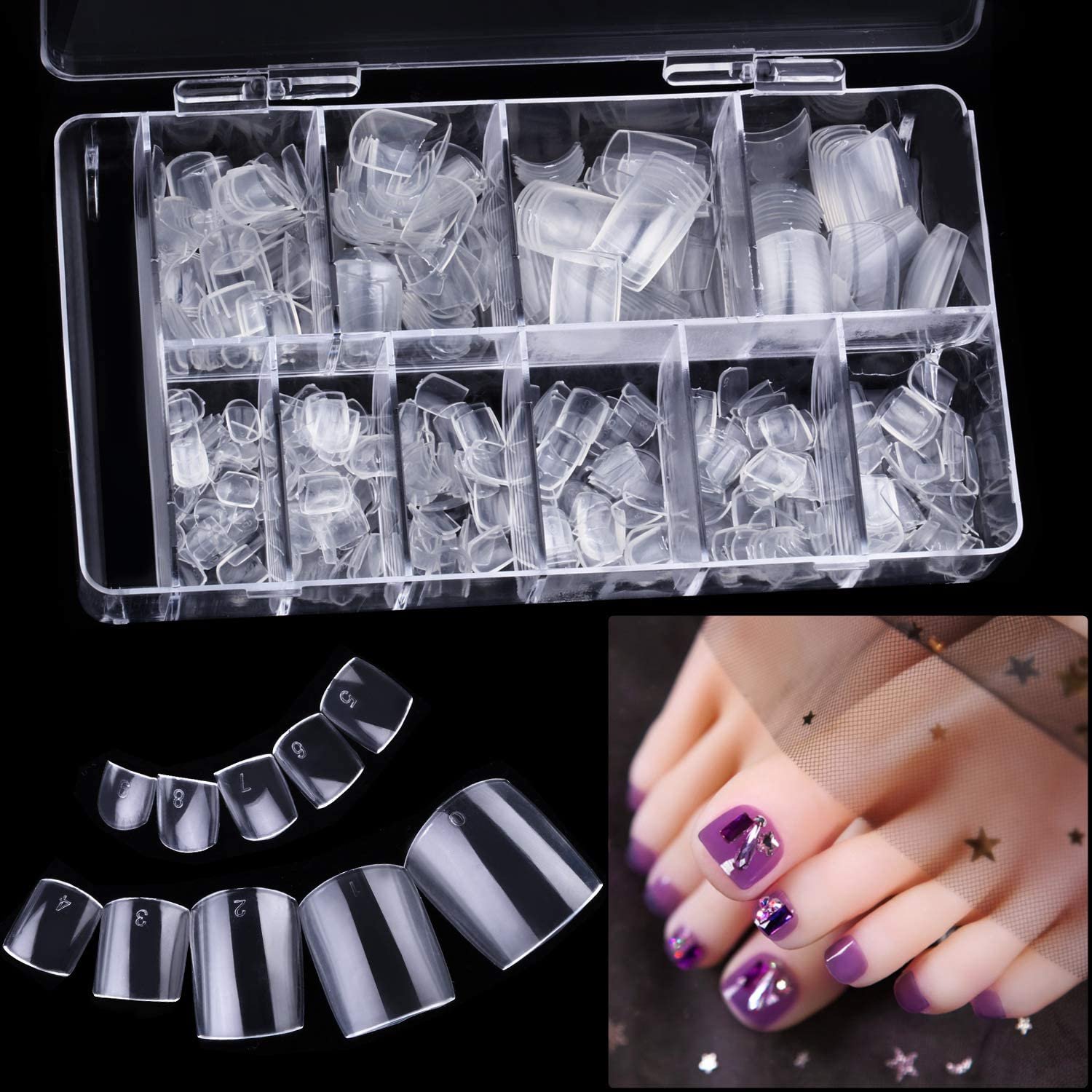
- 500 pieces artificial nails
- 5 pieces nail sticks
- 5 pieces nail files
- 5 pieces cleaning pad
- Lasts 2-3 weeks
Ranrose Gel x Toenails Tips – 120pcs Clear Full Cover Toe Nail Tips

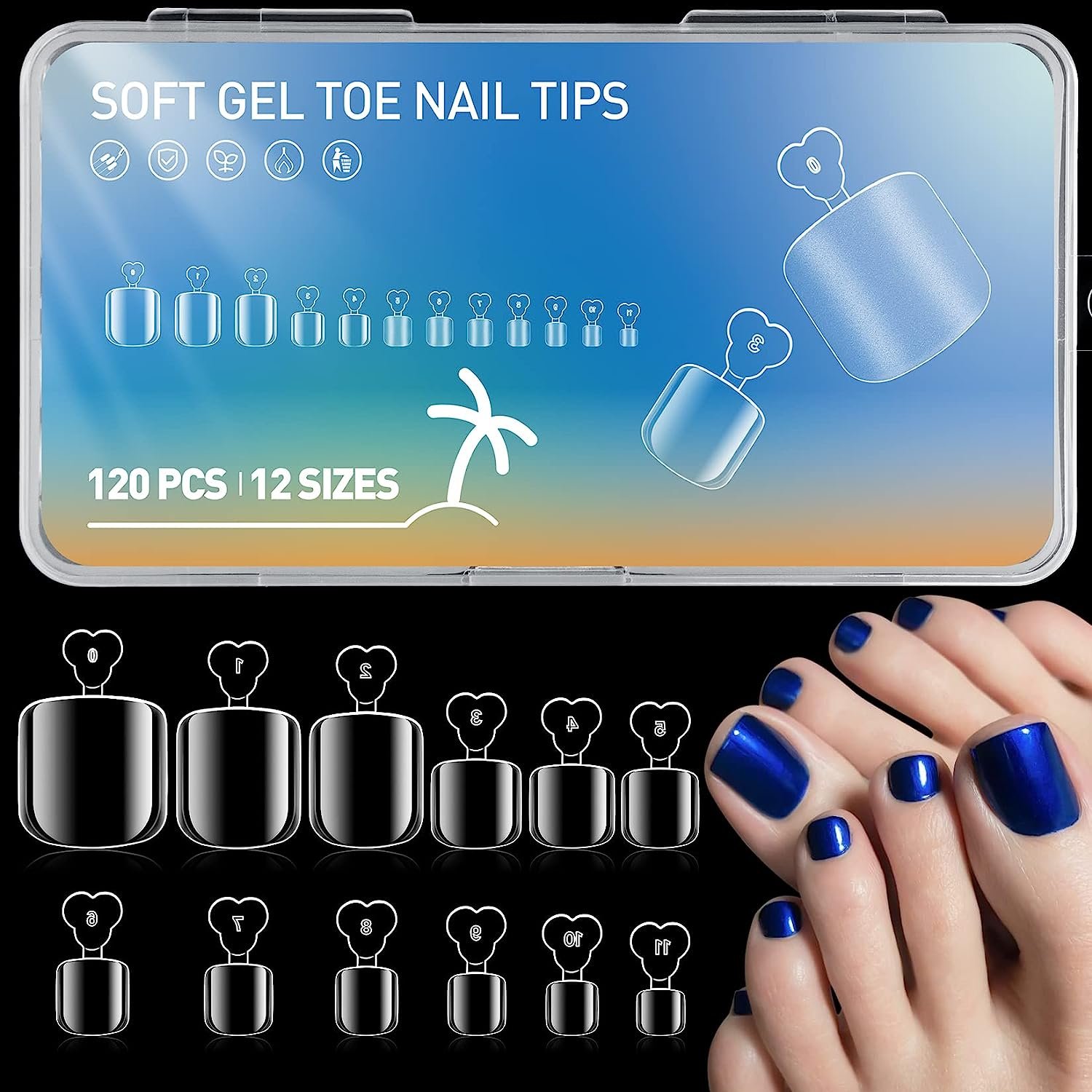
- French Style
- Perfect for Acrylics
- Durable
SAGEBIO 240pcs False Toenails Artificial French Acrylic Clear Toe Nail Tips


- Easy to Apply
- Great for Christmas, Parties, Birthdays etc
- Can be used for gel, acrylic powder, dip powder
YADADA 240 Pieces Fake Toenail Tips Acrylic False Toenails

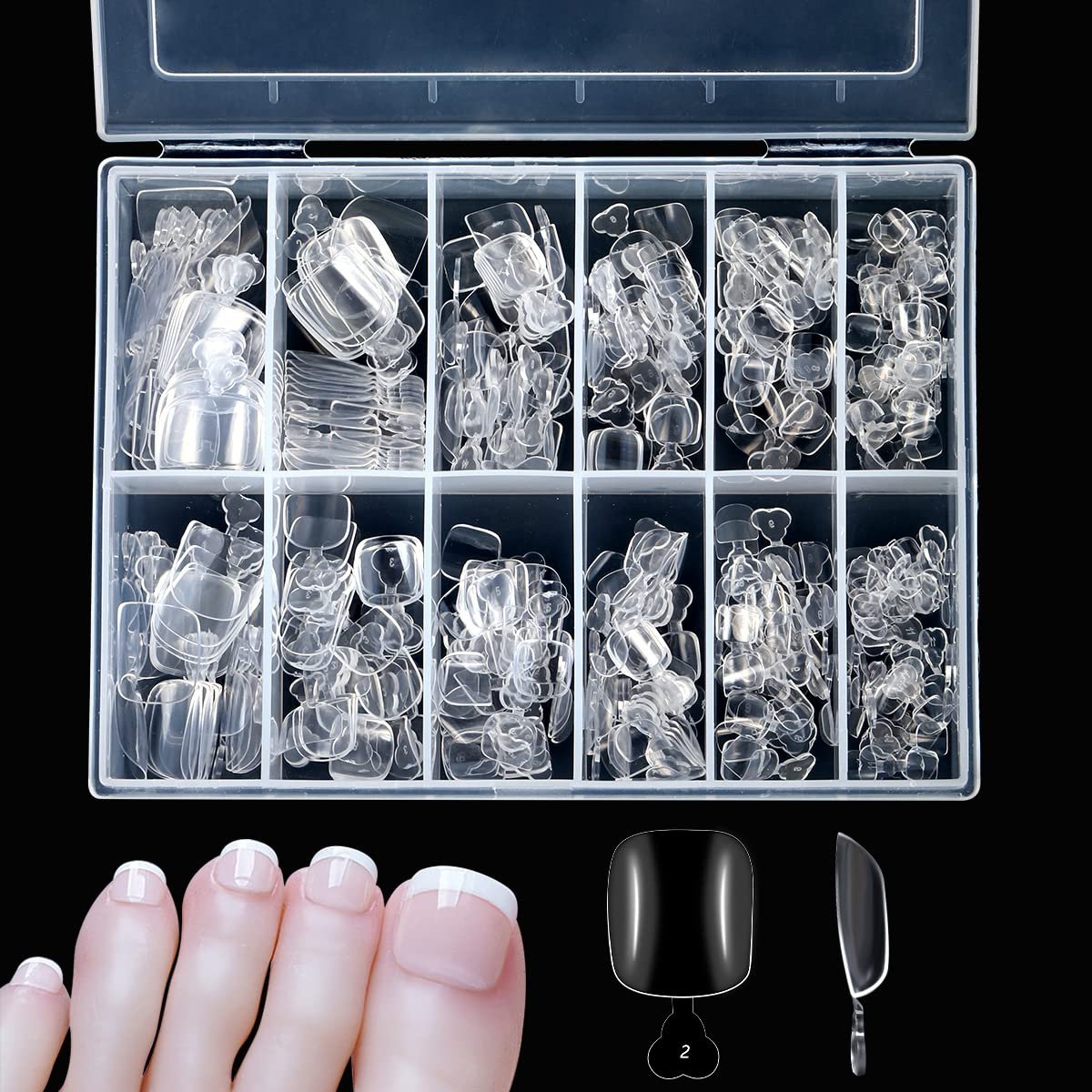
- Great for Beginners
- For DIY
Additional Advantages of Acrylic on Toenails


Besides their longevity, acrylic on toenails offers several additional advantages such as:
- Durability: Acrylic nails are known for their strength and durability. They are less prone to chipping and breaking compared to natural nails, making them ideal for individuals with weaker or brittle nails.
- Customization: If you are getting acrylic nails for the first time on toes, you should know that they provide endless possibilities for customization. You can choose from a wide array of colors, designs, and finishes.
- Length and Shape: Acrylic nails also offer the ability to achieve desired nail lengths and shapes that may be difficult to attain with natural nails. You can also get them in shapes such as stiletto, coffin, or almond, acrylics can help you achieve the desired look.
- Nail Protection: I totally I agree. Acrylic nails on toes act as a protective layer for your natural nails. They shield your nails from external elements, reducing the risk of breakage and damage. This can be particularly beneficial for individuals who engage in activities that may put their nails at risk, such as sports or even during a bowling event
- Nail Corrections: Additionally, acrylic nails can be used to correct certain nail imperfections. They can help to cover up ridges, splits, or discolorations on the natural nails, creating a smooth and flawless appearance.
- Nail Length Maintenance: Lastly, acrylic nails can assist in maintaining a consistent nail length. If you struggle with growing them, acrylics provide an artificial extension that can discourage nail growth.
If you are scared that acrylics will ruin your natural toes, I have an article that can help ease your mind.
Editor’s Pick: Morily Press on Toenails Short – Hot Pink Fake Toe Nails with 3D Rhinestones Design Cute Square
How Do I Know if I Got a Toe Nail Infection From a Pedicure?
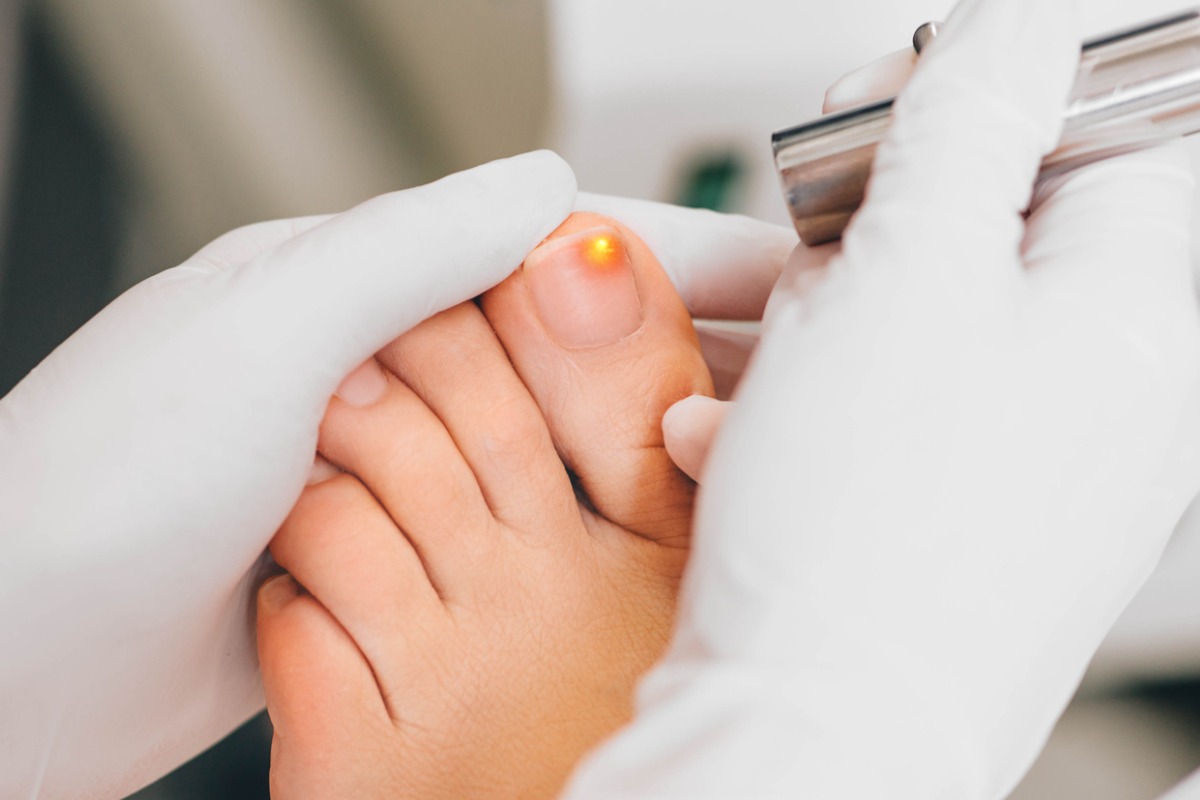

If you’re concerned about a potential toe nail infection after getting acrylic pedicure, it’s important to pay attention to certain signs and symptoms. Below are a few indicators ;
- Redness and Swelling: If the skin around your toenail appears red, inflamed, or swollen, it could be a sign of infection. This is especially true if the redness and swelling increase over time.
- Pain and Sensitivity: Infections often cause discomfort or pain around the affected toenail. You may experience tenderness or sensitivity when touching or applying pressure to the area.
- Pus or Drainage: The presence of pus or any discharge around the nail or under the nail bed is a clear indication of infection. Pus may be yellow, green, or white in color.
- Heat or Warmth: An infected toenail may feel warm or hot to the touch. This is mainly as a result of the body’s immune response to the infection.
- Changes in Nail Appearance: Look for any changes in the appearance of the natural nail itself such as; discoloration, thickening, brittleness, or separation of the nail from the nail bed.
- Foul Odor: An unpleasant odor emanating from the affected toe or the area around the nail could indicate an infection.
If you do see any of these symptoms, you should seek medical attention from a healthcare professional or a podiatrist. They can properly assess the situation and provide a diagnosis. A health care professional will recommend appropriate treatment options to address the toe nail infection effectively. Early intervention is best to prevent the infection from worsening and potentially spreading.
Is Acrylic Pedicure Safe?
Acrylic pedicures are safe and will not hurt when performed correctly at home or by experienced nail technicians who follow proper hygiene practices. If you decide to get acrylics at home, make sure you have adequate ventilation to minimize exposure to fumes.
Nail technicians at salons should also maintain cleanliness, using sterilized or disposable tools and disinfecting surfaces. However, individuals with allergies or sensitivities such as eczema should inform their technician beforehand. Proper aftercare instructions should also be followed to maintain nail health. It’s important to research and choose a reputable salon, communicate any concerns, and ensure a safe and enjoyable experience.
Drawbacks of Acrylic Toenails
Okay, while acrylic toenails offer various benefits than cons, it’s just important to consider the potential drawbacks before getting them:
- Damage to Natural Nails: Improper application or removal of acrylics can lead to damage to the natural nails. This can happen by over-filing, doing excessive buffing, or incorrect removal techniques . This can cause thinning, weakening, or even breakage of the natural nails.
- Risk of Infection: If you get acrylics on toes and do not properly maintain them, you will risk getting nail infections. That’s right. Moisture and debris can get trapped between the acrylic and the natural nail, creating an ideal environment for bacterial or fungal growth.
- Allergic Reactions: Some individuals may develop allergic reactions or sensitivities to the chemicals used in acrylic products. This can manifest as redness, itching, swelling, or discomfort around the nails. You should first check if you have any allergic reaction to acrylic material before you get them on your toes.
- Lengthy Application Process: Acrylic nails require a time-consuming application process, which can involve multiple steps and drying time. This may be inconvenient for individuals with busy schedules or those seeking a quicker nail enhancement option. But, it is definitely worth it.
- Cost and Maintenance: Acrylic toenails can be costly, especially if you opt for salon services. Additionally, regular maintenance, such as refills or touch-ups, is necessary to keep the acrylic nails looking their best, which can add to the overall cost and time commitment. Check out this article on how much it can costs to get your acrylics done .
If you must get acrylics on toes, weigh these potential drawbacks against the desired benefits before deciding.
How Do You Heal Damaged Toe Nails After Acrylics?
To heal damaged toe nails after acrylics, here are some effective strategies you can apply:
- Hydrate, Hydrate and Hydrate: Drink plenty of water and eat a healthy diet: Staying hydrated is essential for overall nail health.. This promotes healthy nail growth and strength.
- Take some biotin supplements: Biotin, a B vitamin, supports nail health and growth.
- Go for nail keratin treatment: Apply a nail keratin treatment specifically designed to repair and strengthen damaged nails. These treatments contain ingredients that promote nail recovery and expedite the healing process.
- Massage your fingertips always after applying cuticle oil: After applying cuticle oil, gently massage your fingertips to stimulate blood circulation. This encourages healthy nail growth and nourishment.
- Soak nails in oil once a week( I recommend Olive oil): Once a week, soak your nails in warm olive oil for a few minutes. Olive oil or any other moisturizer helps moisturize and nourish the nails, promoting their healing and flexibility.
Remember, healing damaged toe nails takes time and patience. Be consistent with these practices and give your nails the care they need to recover and regain their strength.
Frequently Asked Questions
Can Salons Do Acrylics on My Toes
Nail Salons are the best place to have your acrylics fixed . Most salons have extra services that you can take advantage of. Although you can do your acrylics at home, I totally recommend visiting a nail salons to grab some of the extras.
How Long Does it Take to Get Acrylics on Toes at the Salon
It can take 30-1 hour. It totally comes down to what nail service you require.
Will Acrylics on Toes Hurt for the First Time?
Acrylics can cause some discomfort for some people with sensitive skin for the first time due to the application process, but it should not be overly painful.
Final Thoughts
I think you should take your pedicure to the next level, You can do a DIY at home book an appointment with a skilled nail technician . Your toes deserve to be pampered . Give it a try and let me know how it goes.
SOURCES
- WebMD: 6 Tips for Foot and Nail Care
- Health.Alberta.ca: Foot and Toenail Care
- Wikihow: How to Care for Your Feet and Toenails




